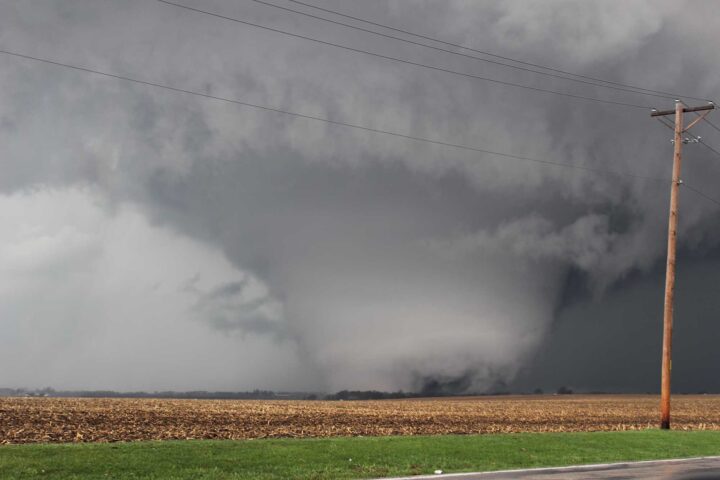“Tornado Alley” has long been associated with tornadoes, with May and June the busiest months. However, Tornado Alley is shifting towards the southeast U. S. and toward population centers. It’s also starting earlier than ever.
So what is Tornado Alley? The term traditionally refers to an area roughly from South Dakota southward to north central Texas. However, tornadoes are becoming more frequent to the east and north. Scientists documented this eastward shift. A 2018 study found that tornado frequency generally decreased over The past four decades across Tornado Alley, while increasing to the east across the Lower Great Lakes, and into the Deep South.
Northern Illinois University researchers found that supercells, the origin of most tornadoes, will become less frequent across Tornado Alley and more frequent across the eastern U. S. as the planet warms.
Others have noted the frequency of tornado outbreaks has shifted dramatically eastward since 1950, and they increasingly occur in clusters, or multiple tornadoes in the same area. Research also suggests tornadoes are now more common in the late winter and early spring, and less common in the late summer and early fall.
The biggest consequence is a significant increase in damage risk. While people live in Tornado Alley, it’s far less densely populated than areas to the east. People used to worry about a tornado in downtown Dallas: these studies suggest downtown Memphis and Nashville are more likely to see one instead. Millions more Americans now live in an area where tornadoes are common.
Is climate change to blame? Yes, but it’s complicated. Nationwide Doppler radar is a powerful tool for detecting tornadoes, even when there’s no one there to see them. This could be responsible for part of the increase. The Southeast U. S. is also far more populated as we mentioned, so tornadoes are easier to detect. Severe weather awareness is higher, and in our social media age, videos provide much faster confirmation of tornadic activity.
But the increase is too significant to pin on these reasons alone. We can likely pin some of the blame on climate change. But is natural or man-made variability the cause?
One school of thought suggests the uptick is part of an overall increase in severe weather across the U. S. due to climate change. Models have been forecasting this for years. However, others argue the variability may stem from bigger cycles, such as differences in Pacific sea surface temperatures. This could also be shifting Tornado Alley, but we don’t have enough data to make a clear judgment.
No matter the reason, the data suggests that Tornado Alley is no longer just limited to the Great Plains. It’s more important than ever to stay “weather aware.” When a tornado warning is issued, take it seriously. Head to an interior portion of the building or your home. If you hear the tornado approaching, get low and protect your head.
A weather radio is also invaluable during severe weather. Our favorite is the Midland WR 120 NOAA Emergency Weather Alert Radio. It can receive weather alerts directly from the National Weather Service using SAME technology, which allows the weather radio to display the type of warning even after the broadcast message ends.
That’s the easiest way to keep yourself safe and is far more dependable than the often incorrect weather app. Tornadoes happen quickly, but we hope we’ve given you a better understanding of why tornadoes seem to be more frequent and more destructive.



